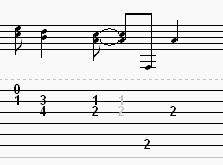Composer – Jim Croce
Where to find this song – You Don’t Mess Around With Jim track #7
Release Date – May 1972
Croce was born on January 10, 1943, in Philadelphia, Pennsylvania. He began his music career as a disc jockey when he was in college at Villanova University. By 1967, Croce had moved to New York and began performing folk music in the local coffeehouses and clubs. Two years later, he and his wife, released the album, “Approaching Day”. Unfortunately, this first album did not sell well and Croce had to supplement their income by becoming a truck driver. Jim returned with the hit album, “You Don’t Mess Around with Jim” in 1971. The album produced the hits, “Operator (That’s Not the Way it Feels)” and the title track. He followed with the gold-certified, Top 10 albums “Life and Times” and “I Got a Name”, both released in 1973. Shortly after, Jim Croce tragically died in a single-engine plane crash over Natchitoches, Louisiana, while on tour. After his death, both “You Don’t Mess Around with Jim”, and “I Got a Name” reached number one. Towards the end of 1974 a greatest hits album called “Photographs and Memoires” was released. The compilation LP contained hits like “Bad, Bad Leroy Brown”, “Time in a Bottle” and “I Have to Say I Love You in a Song”. It became a top 10 album, ironically after his death. Jim’s widow opened a club in San Diego called “Croce’s” where their son A.J. plays guitar, and plays much of his father’s music there.
Verse Riff

How To Play It
Part 1

The beginning of this riff is very simple, so let’s begin! First, place your 3rd finger on the third fret of the “low E” string. Next, simply play the “G” string, then the “B” string, then the “D” string all open. Next play the “G” string and the “B” string again open. Last, play the “D” string and then the “G” string open one last time for the measure.
The second measure is a B minor chord picked out. Place your 1st finger over the second fret of the “A” string. Then place your 3rd finger on the “D” string on the fourth fret. Next place your 4th finger on the “G” string on the fourth fret, and your 2nd finger on the “B” string on the third fret. Now, play in this order: the “A” string, the “G” string, the “B” string, the “D” string, the “G” string, and then the “B” string. Last, play the “D” string one more time, and remove all fingers from the guitar, hitting the “B” string open one last time.
Part 2

The third measure is a basic Am chord. Here is an example of how to play an Am chord with a chord diagram. If you know how to play an Am, then simply follow these steps in playing the correct strings: “A” string, “G” string, “B” string, “D” string, “G” string, “B” string, “D” string, “G” string. That is the third measure using the chord diagram.
If you are not comfortable with that, then place your 2nd finger on the “D” string on the second fret, your 3rd finger on the second fret of the “G” string, and your 1st finger on the first fret of the “B” string. Then follow the same order as above: “A” string, “G” string, “B” string, “D” string, “G” string, “B” string, “D” string, “G” string.

For the fourth measure, you will begin by noticing that one of the last notes of the third measure is on the first fret with your 1st finger right? Ok, well, since you know that, just allow that finger to stay where it is and simply play that first fret note from your 1st finger once and also hit the “high E” string at the same time. Now you are ready to play the second part of the fourth measure. Play this by using your 1st finger and placing it on the third fret of the “B” string. Then, place your 2nd finger on the fourth fret of the “D” string. Play that once and then simply keep your fingers in the same position and slide to the first and second frets in the same arrangement. Play that once. Then use your 2nd finger on the second fret of the “low E” string and your 3rd finger on the “G” string on the second fret.
